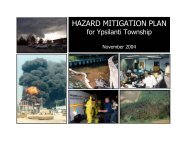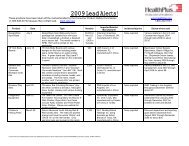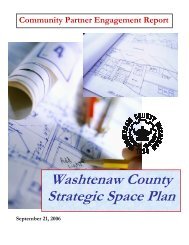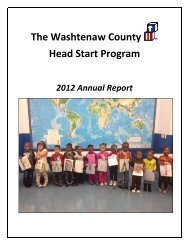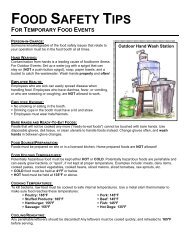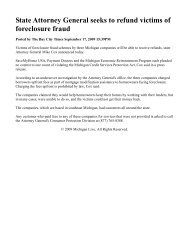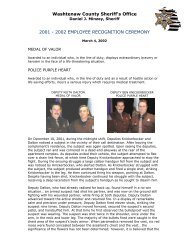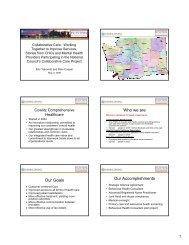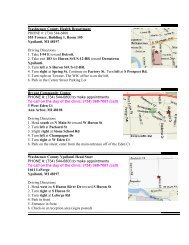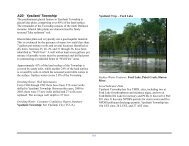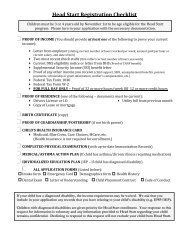Water Protection Activities in Washtenaw County
Water Protection Activities in Washtenaw County
Water Protection Activities in Washtenaw County
Create successful ePaper yourself
Turn your PDF publications into a flip-book with our unique Google optimized e-Paper software.
Most, if not all, of the local units of government <strong>in</strong> <strong>Washtenaw</strong><br />
<strong>County</strong> have pet waste ord<strong>in</strong>ances. These ord<strong>in</strong>ances require<br />
pet owners to properly cleanup and dispose of waste produced<br />
by their pets. Enforcement of these ord<strong>in</strong>ances may go a long<br />
way to address<strong>in</strong>g this challenge. In addition, public education<br />
efforts are be<strong>in</strong>g stepped-up. The Humane Society of Huron<br />
Valley estimates some 60,000 feral cats <strong>in</strong> <strong>Washtenaw</strong> <strong>County</strong>.<br />
Spay and neuter<strong>in</strong>g programs are ongo<strong>in</strong>g.<br />
Beach monitor<strong>in</strong>g makes sure that all public swimm<strong>in</strong>g<br />
beaches report<strong>in</strong>g elevated levels of pathogens or bacteria,<br />
<strong>in</strong>clud<strong>in</strong>g E. coli, are closed until <strong>in</strong> atta<strong>in</strong>ment with water<br />
quality standards.<br />
Next Steps:<br />
Through DNA test<strong>in</strong>g the <strong>County</strong> has identified pets and urban<br />
wildlife, like raccoons, skunks, and cats, as a major contributor<br />
to the E. coli challenge. Education is key to mitigat<strong>in</strong>g this<br />
problem, focus<strong>in</strong>g on pet waste cleanup/reduction, monitor<strong>in</strong>g<br />
and controll<strong>in</strong>g pets and/or secur<strong>in</strong>g them <strong>in</strong>doors,<br />
removal/secur<strong>in</strong>g of outdoor trash and food waste storage and<br />
compost.<br />
Cont<strong>in</strong>ue the ongo<strong>in</strong>g efforts of the Illicit Discharge<br />
Elim<strong>in</strong>ation Program. Work to <strong>in</strong>corporate the results of DNA<br />
test<strong>in</strong>g <strong>in</strong>to planned strategies for the reduction of pathogen<br />
and bacteria contam<strong>in</strong>ants <strong>in</strong> the water system. Work toward<br />
develop<strong>in</strong>g an ecosystem based as opposed to an urban area<br />
based approach to confront this challenge.<br />
53<br />
Figure 13: E. coli<br />
Source: http://www.organicovertune.com/pathogens.html, Oct. 2006



